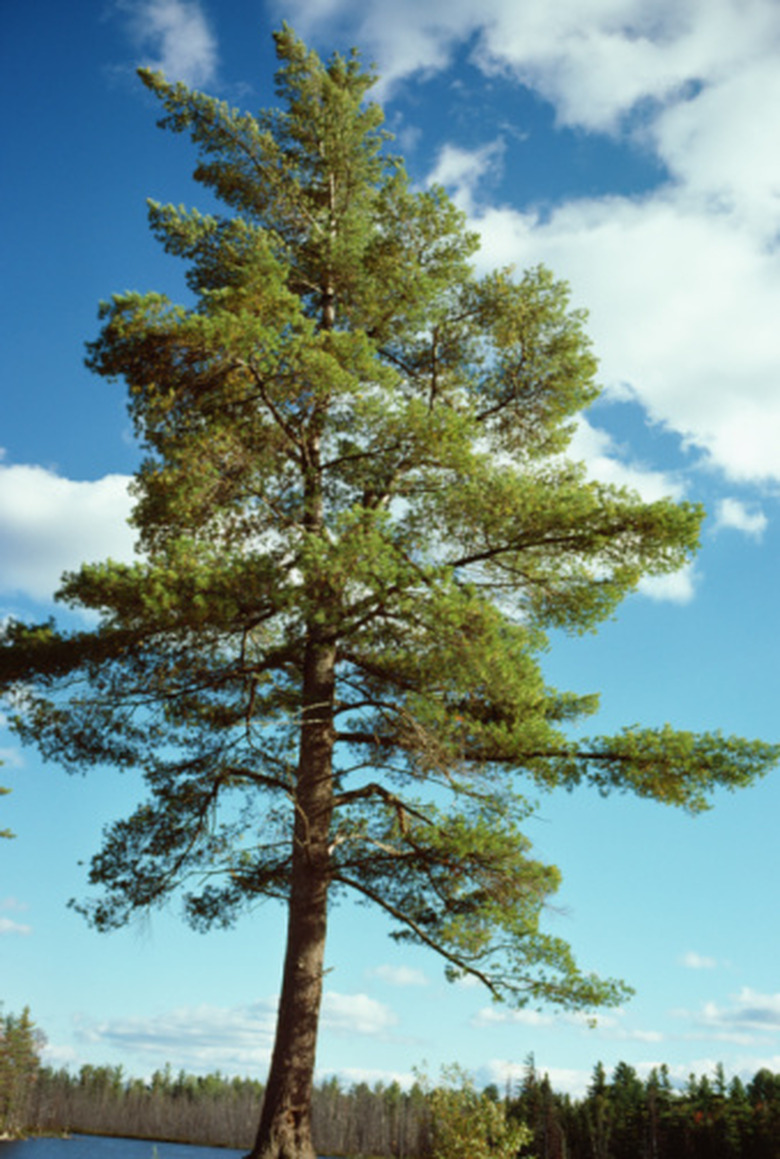Pine Tree Fungus Cure
Fungi can sometimes be the bane of the successful gardener's existence. While fungi serve many important and beneficial purposes in outdoor ecosystems, fungi can also transmit numerous diseases to plants and thus affect their health. Pine trees, for example, are susceptible to a range of fungal diseases, and identifying the kinds that are most likely to attack your pine is the first step to protecting the pine's health. Should your pine become infected with one of these fungal diseases, cure it by designing a treatment program targeted at the specific species causing tree damage.
Annosus Root and Butt Rot
Annosus root and butt rot is a disease characterized by excessive defoliation, thinning of tree foliage near the crown of the tree and red pine needles. Tree death will result from an untreated annosus root and butt rot infection; so to cure your pine tree, prune back diseased parts of the tree and treat the cut wounds with borax. If your pine dies from the disease, pull it up and do not plant any other pines within 20 feet of the diseased tree's former position.
Needle Rust
Needle rust is another common fungal disease of pine trees. Your pine tree may take on a yellow or tan appearance from afar. Upon closer inspection of pine needles, you will see tiny white blisters where the fungal diseases agent is beginning to sporulate. This disease causes little more than cosmetic damage for your tree, so control methods usually are not necessary. Simply clean up any needles that fall off the tree to prevent the disease from spreading to other nearby trees, and allow the pine to grow back healthily.
Artist’s Conk
Artist's conk is the common name for Ganoderma applanatum, a fungal disease affecting pines and many other types of trees. The most conspicuous symptom of this disease is the appearance of semi-circular "conks" on different parts of the tree's anatomy. To minimize damage and cure your pine of this disease, prune off diseased parts of the tree and discard or burn them immediately. If infection persists, treat with an approved fungicide.
Other Fungal Diseases
Other fungal diseases that are known to commonly damage pine trees include varnish fungus, rot sulfur fungus, common split gill, turkey tail and hairy turkey tail. Treatment methods differ slightly from disease to disease, but there are general treatment methods that apply to all diseases. Trees that are already in a declining state of health are always more susceptible to fungal diseases, so keeping your tree in good health is an all-important preventative step. Prune the diseased parts of the pine and discard them right away to prevent the fungus from spreading to other parts of the pine or to other plants nearby. Serious infections can be treated with an approved fungicide targeted at the specific fungal species that is attacking your tree.
